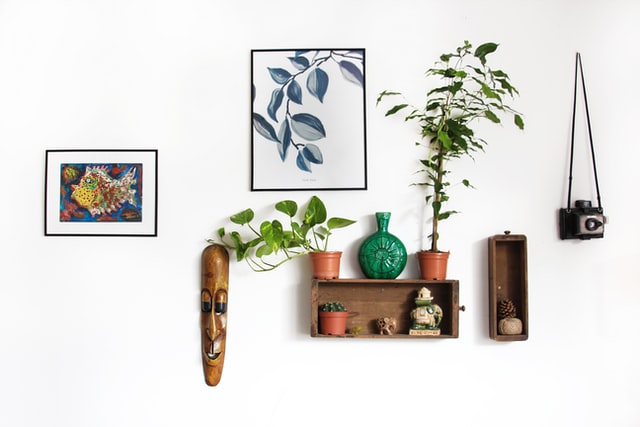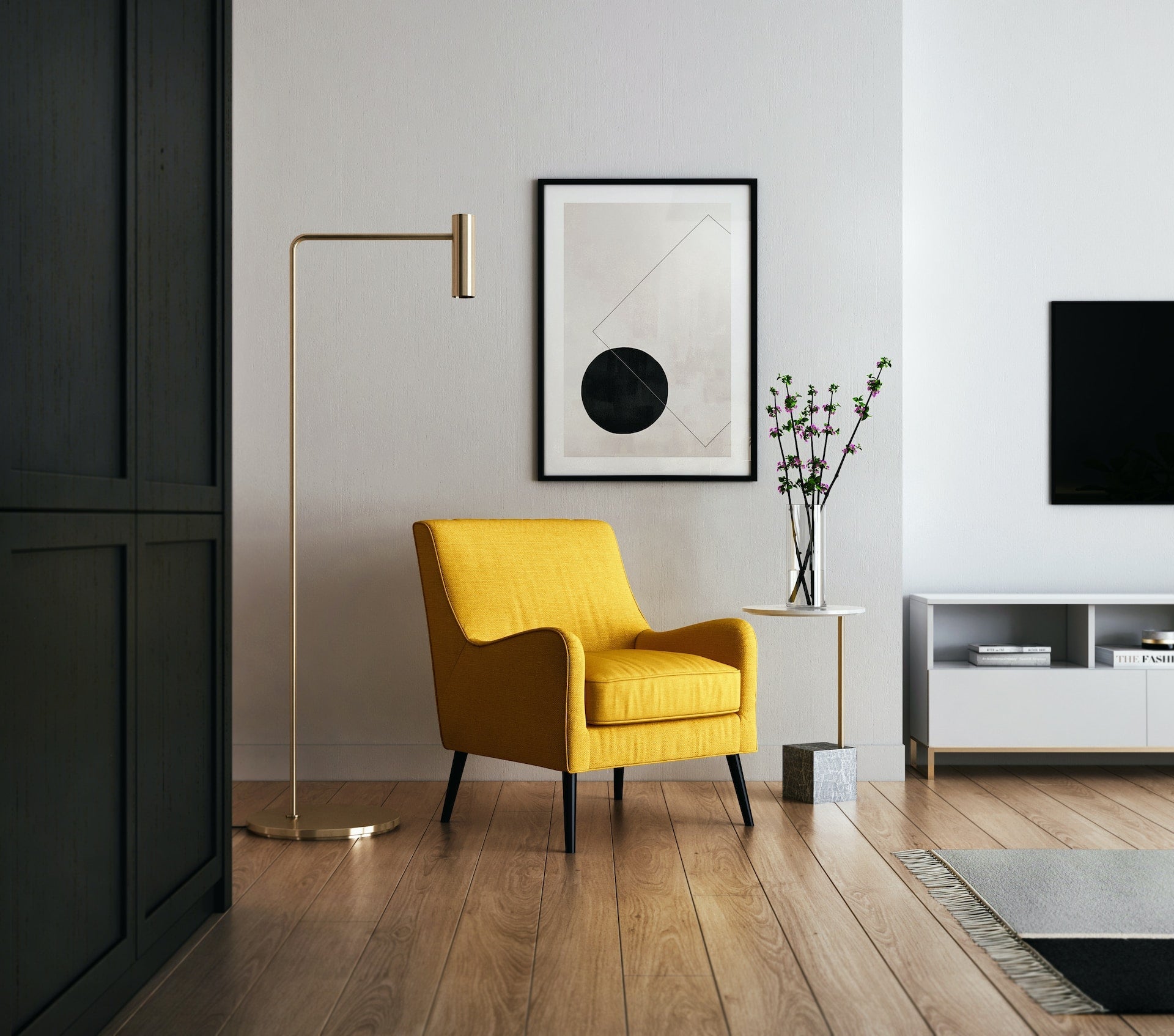

Featured image
Alt: A collage of art prints on a wall.
Creating art can sometimes mean breaking the rules and setting your imagination free. The same thing applies when displaying art. Even though certain kinds of art have "rules" for display, breaking them is perfectly fine. After all, you are choosing art for your home, so you get to decide how it will be presented. Unleash the rebel inside and be as inventive and creative as you want. And, to help you get the best results, we put together a list of 6 art displaying rules you should break. Follow our lead, and you will become the finest art displayer.
Everything has to match
Wrong! When it comes to displaying art in their homes, this is the most common mistake people make. Thinking that the frame of a painting must match the color of the furniture, for example, is incorrect. Matching your art with your other art is just as good, especially if you want to portray a specific theme. Also, you can use the surroundings to highlight an art piece by creating contrast. Imagine an art print of bright red poppies with a black frame on a cool-toned white wall. It will immediately catch the eye and become the centerpiece of the room. In a word, when you display art, you have to think more like an artist and less like a decorator.
Paintings are for walls and sculptures for pedestals
That is one of the rules that art pieces can break by themselves. If you're wondering how it is possible, the answer might surprise you. Relief sculptures or carvings, both of which are considered sculptures, can be displayed on the walls. As well as some drawings and paintings intended for display on mantels or consoles, and not for walls. Not to mention that putting art in unexpected places can help you highlight overlooked areas. Hang, lean, or suspend art in your home to give it the best exposure. It doesn’t matter what tricks you use, as long as the outcome is beautiful.

Eye-level is the perfect height for art
Perhaps you've heard of the rule that requires paintings to be displayed 57 inches above the ground. Because they are at eye level, it is simpler for the observer to admire them. However, this rule is intended for art galleries and not necessarily for your home. When making a collage, for example, each painting can be at different levels. It mainly depends on the sort of artwork you're showcasing and the amount of space you have available. Furthermore, the paintings or art prints that you want to display might not be the same size. That means that you will have an asymmetric art display, and it is perfectly OK. Minimalistic Nordic-style artworks, for example, go very nicely in such settings. Keeping art at eye level is most definitely one of the 6 art displaying rules you should break.
Large walls call for large art
Consider the idea of having to relocate to a larger home with big, empty walls asking for art. Instead of spending ridiculous amounts of money on a new big art piece, try to work with what you have. Bring in all your paintings, drawings, and sculptures that you might have and place them in the perfect spots. Just make sure to hire a company that offers specialty moving services to help you along the way. The relocation of such items requires special care and attention, and it's better to let professionals handle it. Once you have your art brought safely to the new place, display it so that it catches the eye. Don't worry if you have a large blank wall to fill; a small piece of art can make a big difference in a room.

Never mix different styles
Another one of the 6 art displaying rules you should break states that you shouldn't mix artwork from different styles. In return, we encourage you to do just that. Break the rule of using the same color palettes, and start experimenting with them. If it's OK to mix and match different-sized art, why shouldn't it be acceptable to mix styles? For instance, you can choose a theme, like flowers or animals, and mix styles of artwork following that theme. You can use this method to decorate a single wall or an entire room. It is all up to you and the art that you have at hand.
You need to have symmetry
As previously mentioned, asymmetry can have a better impact on a wall than having everything in line. Collages are the perfect example for backing up this theory. Also, placing artwork at an angle can look spectacular if done correctly. You should make it clear that this was done on purpose and not by accident. For example, you can draw a diagram of your wall and play with the placement of the artwork. It will allow you to view the result before you hang the art on your walls. Another great idea is to place the frames directly on the wall and see how they will fit. If everything looks good, frame the artwork and place it in the same spot. And, as a helpful hint, when arranging the frames on the wall, try not to hang them with nails. If you need to modify their position, you'll have a lot of holes to fill.

Final words
When it comes to decorating your home, these art displaying rules to break should be your inspiration. After all, you are in the comfort of your home, not in an art gallery. Who says that paintings have to match the room and they are only for the walls? You can display them leaning on the floor, and they can match with each other. Additionally, you don't have to use a tape measure to place your art at the perfect height or in line. Placing art above the door or giving it an angle can have much more impact on the room. In the end, you should forget about the old ways of displaying art and find your style. It is the best way to personalize your home and show just how creative you can be.
Meta Description: When you want to enrich your home with art, but there are too many rules to follow, here are 6 art displaying rules you should break.
Images used:
https://www.pexels.com/photo/assorted-paintings-383568/
https://unsplash.com/photos/XwdSGEiOahM
Leave a comment (all fields required)
Comments will be approved before showing up.


